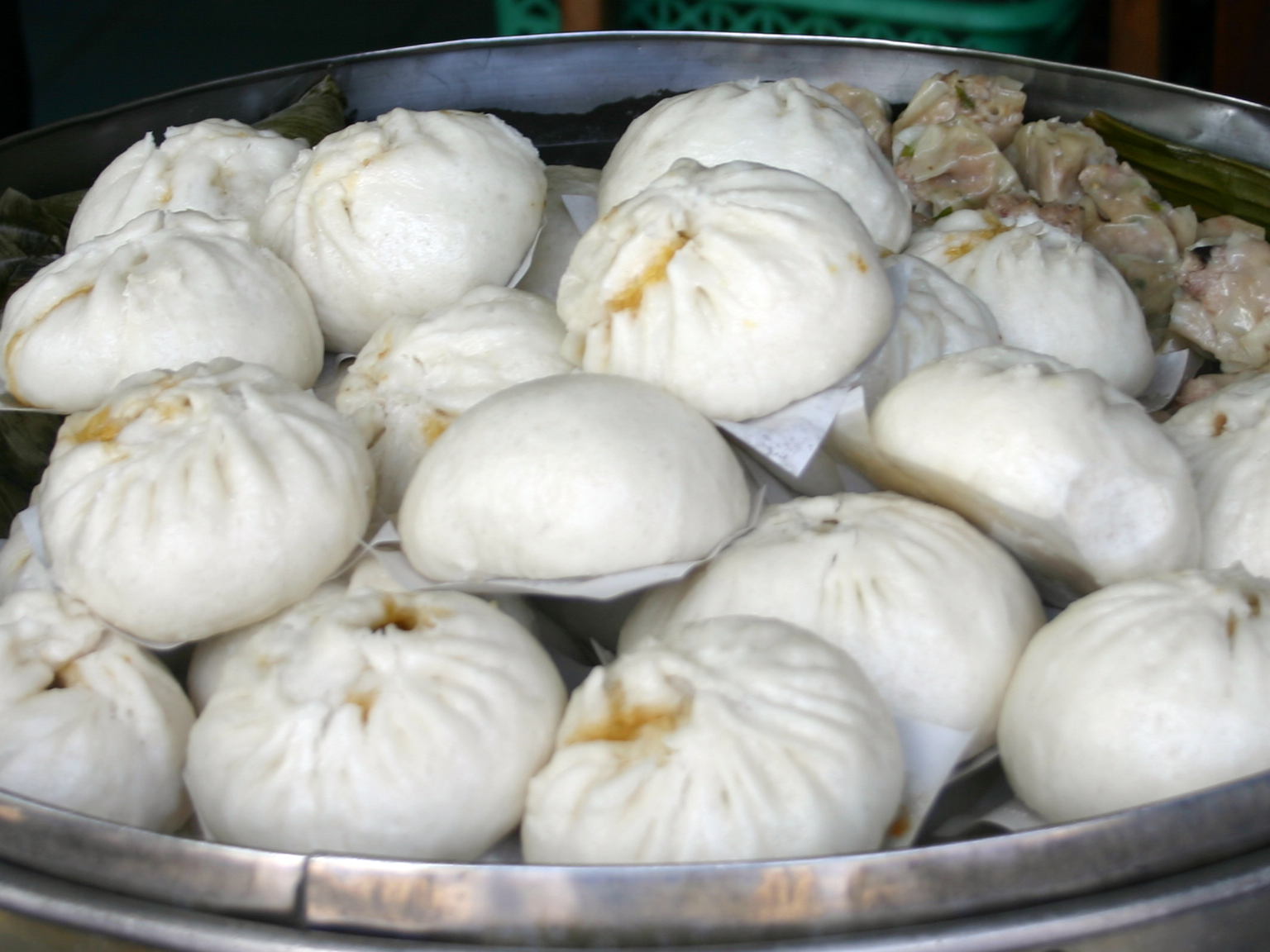Thai steamed buns are closely related to their Chinese origins. The main difference is the variety of fillings to be found in Thailand. Sala pao have become an increasingly popular snack in recent years, thanks no doubt to their wide availability in the local branches of a large international convenience store chain. You can still find ‘authentic’ steamed buns in many markets, especially in Chinese districts. Steamed buns have become so identified with a certain American convenience store chain that the phrase “Would like some sala pao?” has become a clich&eactue; on par with “Would you like fries with that?” So much so that a recent film featured a robber holding up a shop, only to be automatically asked by the cashier if he would like a steamed bun with his loot.

Despite the corporate inroads, there are still many small shop houses and carts offering home made buns. There are a couple of old fashioned shop houses selling steamed buns along Charoen Muang Road, just across the Ping River from the city’s famous night bazaar. Even in mid-morning when I stopped by to check out the wares and get some photos, there was a steady stream of customers buying two to four buns for a quick snack. The shop is usually tended by two elderly ladies, sometimes helped out by the daughter of one. One of the ladies tells me that the shop was started by her father, about 70 years ago. He would have been among the many Thai Chinese people who settled in Chiang Mai in the years following the opening of the rail connection to Bangkok in 1922. Many of these people, like the ladies’ father, set up shops along the road leading from the new train station into the old town.
I was admiring the pile of buns one of the ladies had just put into the huge steamer set into the counter right at the front of the shop. The snow white buns had small creases of red, yellow or brown just barely visible at the top, revealing just the tiniest clue as to what fillings lay inside. They seemed to promise red pork, sweet custard or chopped pork. Whilst pondering my choices, another customer came up to the stall and apparently thinking me a completely lost tourist – I must have that look – she tried to explain to me in broken English the various buns on display. She was obviously trying to help the elderly shopkeeper to sell me some buns. She started to ask the old lady about the prices when I pointed to the Thai sign stuck to the side of the glass and read off the prices to her. She punched me in the shoulder for being such a smarty-pants.
The rice flour buns can be filled with almost anything. At this shop, I purchased a couple of chopped pork filled buns. Inside the warm dough was a ball of ground pork formed around a hard boiled egg yolk and with an added slice of the sweet Chinese goon cheeang sausage. Diced red pork is also common, and if you want something sweet, you can find red bean, egg custard and taro fillings.